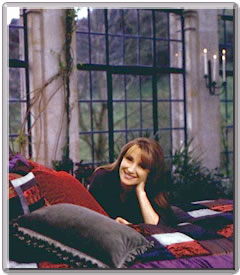
Failed ballerina launched acting career
JANICE MAWHINNEY
LIFE WRITER
Actor and artist Jane Seymour learned very early that the things that seem most painful, frustrating and difficult may lead to some of life's greatest blessings.
Born with flat feet and a speech impediment, and teased mercilessly at school, she tackled corrective exercises so passionately that she went on to train as a professional ballet dancer and become an internationally known, award-winning film actor.
"Almost every time something hasn't gone the way I planned in my life, and my hopes were dashed, once I processed my frustration and disappointment something much better came into my life that wouldn't have happened without the disappointing event," she said in a telephone interview from her home in Malibu.
"It can be easy to get stuck in a sense of disappointment and failure, but in fact there are boundless opportunities in front of you."
Seymour starred in the six-year hit television series Dr. Quinn, Medicine Woman and is admired for her roles in many films including the recent comedy Wedding Crashers, and the enduring favourite Somewhere In Time with the late Christopher Reeve. She also played Solitaire in the James Bond movie Live and Let Die.
She is in Toronto tonight to speak at the Unique Lives & Experiences forum at Roy Thomson Hall. This second of the 2006 lecture series, partly sponsored by the Toronto Star, is sold-out.
Seymour was born Joyce Penelope Wilhelmina Frankenberg in Hillingdon, England. Her mother, a Dutch nurse, survived three-and-a-half years in a Japanese concentration camp in Indonesia during World War II. Her father, an obstetrician who was raised Jewish, saw devastating sights among survivors while searching for relatives killed in the Holocaust. Those experiences greatly influenced the advice they gave her.
She changed her name at age 15, anticipating a career as a ballerina. The plan fell apart two years later when she suffered a career-ending knee injury while dancing the role of a snowflake in Prokofiev's Cinderella performed by the Kirov Ballet, which was touring in England.
Seymour still loves ballet and looks forward to seeing her friend Karen Kain, now artistic director of the National Ballet of Canada. Seymour keeps a pair of Kain's pointe shoes in her closet and tries them on every once in a while.
Seymour studied at a ballet school that educated her in a broad range of arts after the Royal Ballet School rejected her application, so when her injury cut her dance career off at its inception, she was already winning awards for comedic acting.
An acting career followed and blossomed in Hollywood. She believed she was prospering until, at age 40, a series of revelations about her third husband's infidelities, substance abuse and massive debts ended her marriage abruptly. She was left with millions of dollars in debts and lawsuits, and no idea how to deal with it. She asked her agent to find her work, any acting work, as soon as possible.
Within two days she was fitted for costumes and starting work as pioneer herbalist Dr. Quinn, a role she related to because of her late father's medical profession and her own interest in alternative medicine. It led to awards, two movies and six seasons of television programs.
Once again, a life crisis had led Seymour to something she would always see as a gift and a blessing.
During the years of filming Dr. Quinn, she met and married the man she considers her soul mate, actor/director/producer James Keach. She has four children and two stepchildren, ranging in age from 10 to 28.
Three times during her adult life, Seymour came close to death. In one of those experiences she saw visions — including one of her late father who indicated that she would survive her dire illness — and in another she had a classic near-death experience in which she had the sensation of rising out of her body, hovering at ceiling level and communicating with a white light.
These experiences shaped the way she approaches her life, Seymour says.
"I learned that life is short, and I need to spend my time with the people who really matter to me, and in doing things that can make a difference."
She works hard to promote women's heart health and help people with spinal cord injuries, and is an active supporter of organizations helping abused and impoverished children.
Seymour also designs handbags and home decor items, writes books and paints. She is the official artist for the American team at the Winter Olympics.
As she approaches her 55th birthday next week, Seymour says her life is good.
"I'm busier than I've ever been," she says. "I'm challenged and growing creatively. That's what makes me happy."
© Toronto Star